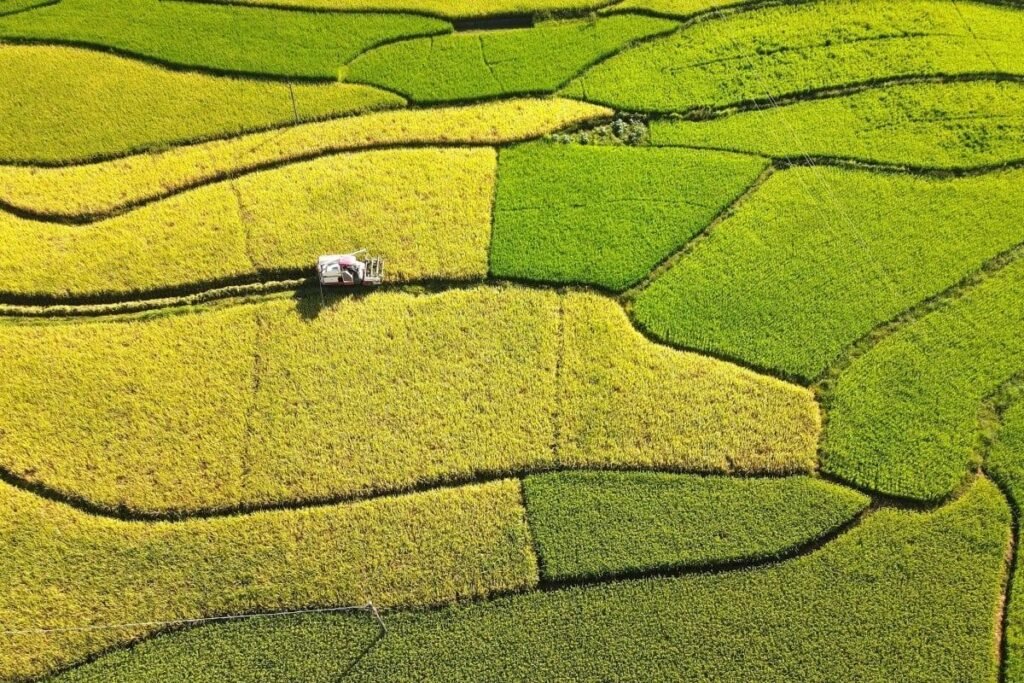The world’s biggest grower of cereal grains – staple foods that comprise the most ubiquitous crops – is looking to further solidify its self-reliance in agricultural science and technology through 2028, according to a newly unveiled strategic plan.
China’s Ministry of Agriculture and Rural Affairs has outlined 10 critically important areas to prioritise while keeping a close eye on advancements in the world’s technological frontiers, according to the plan released on Friday.
Biotechnology, artificial intelligence (AI), the breeding of new agricultural varieties, the improvement of arable land quality, and the development of innovative agricultural machinery and equipment will all be at the forefront of China’s self-sufficiency push as it strives to ensure food security for more than 1.4 billion people while maintaining its industrial chain’s independent and controllable nature.
Do you have questions about the biggest topics and trends from around the world? Get the answers with SCMP Knowledge, our new platform of curated content with explainers, FAQs, analyses and infographics brought to you by our award-winning team.
“In today’s world, scientific and technological innovation has become the main battlefield of international strategic competition, with an unprecedentedly fierce race for technological dominance,” said an article, written by a ministry official, that appeared in the Communist Party’s Qiushi Journal on Monday and further discussed the ministry’s new plan.
Last year, China’s grain output exceeded 7 billion metric tonnes for the first time – a milestone in which agricultural technology played a crucial role, the piece added.
The ministry emphasised that the new wave of an agricultural technology revolution, driven by biotechnology and information technology, is on the verge of achieving significant breakthroughs.
And it said that emerging technologies such as gene editing and AI are evolving rapidly, accelerating the restructuring of industrial and supply chains in the agricultural sector.
The cultivation of new agricultural varieties – including rice, wheat, corn, soybeans, white-feathered chickens and aquatic products – is a key focus of agricultural technology development over the next five years, as outlined in the ministry’s plan.
China will accelerate research in biological breeding technologies and genetics to cultivate high-yield, highly adaptable, and high-quality varieties with independent intellectual property rights, reducing the nation’s reliance on foreign seed sources.
And cutting-edge technologies, including gene editing, synthetic biology and AI, are expected to further accelerate the breeding process.
Against the backdrop of growing supply-chain uncertainties and climate challenges in recent years, Beijing has been prioritising agricultural security and technological self-sufficiency.
In the past three years, since President Xi Jinping reiterated the importance of cultivating an independent seed industry in 2022, researchers have increased efforts to create innovative new varieties. This came after leadership said during the 2020 central economic work conference that the country “must strive for “technological breakthroughs in seeds” and “battle to turn the seed industry around”.
Friday’s notice also highlighted the need to ensure the safety and quality of agricultural products, and it called for the development of agricultural mechanisation and intelligent equipment.
Policies will encourage the research and development of high-end smart agricultural machinery while promoting the deep integration of AI, the Internet of Things, and robotics with agriculture to enhance productivity and reduce reliance on manual labour, the ministry said.
In terms of rural development, local governments will formulate agricultural and rural modernisation pathways based on different regional characteristics, promote the balanced development of urban and rural areas, strengthen rural economies, and improve farmers’ living standards.
With the help of a black-soil conservation law passed in 2022, which protects the most fertile soil in regions responsible for the bulk of China’s grain output, as well as efforts to reduce the degradation of arable land and implement intelligent monitoring systems, China has taken strides toward improving the sustainable productivity of its farmland.
More from South China Morning Post:
For the latest news from the South China Morning Post download our mobile app. Copyright 2025.

